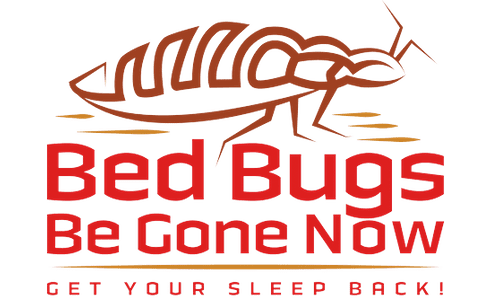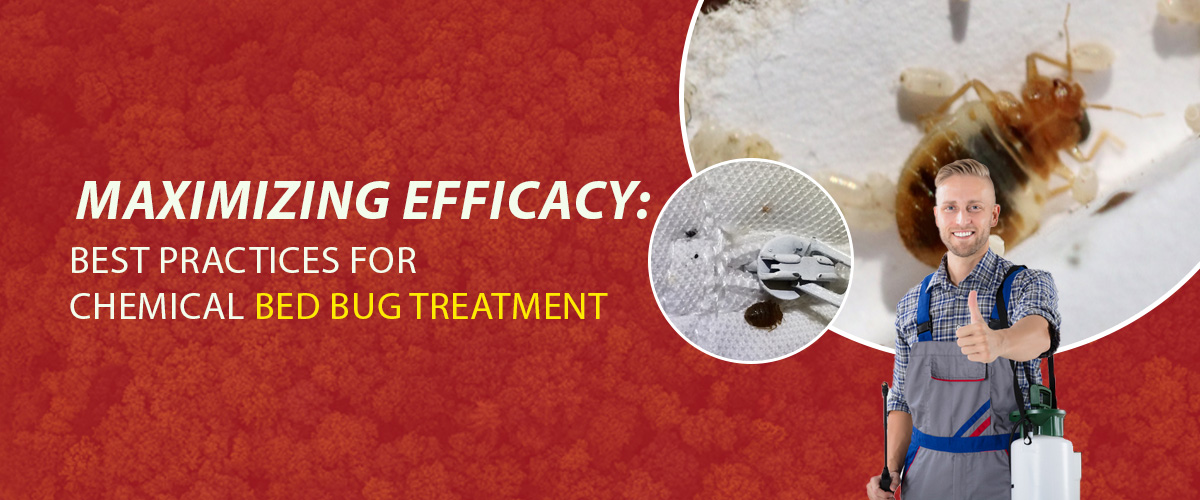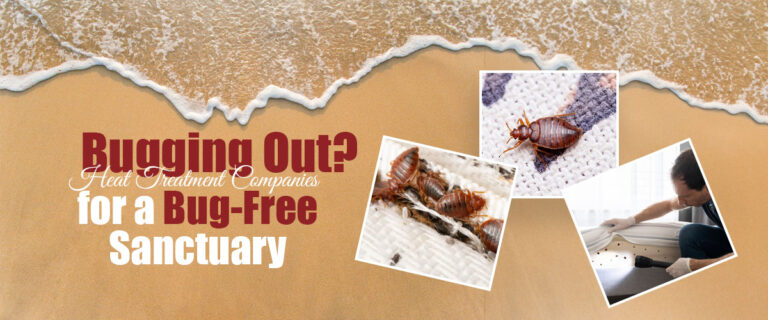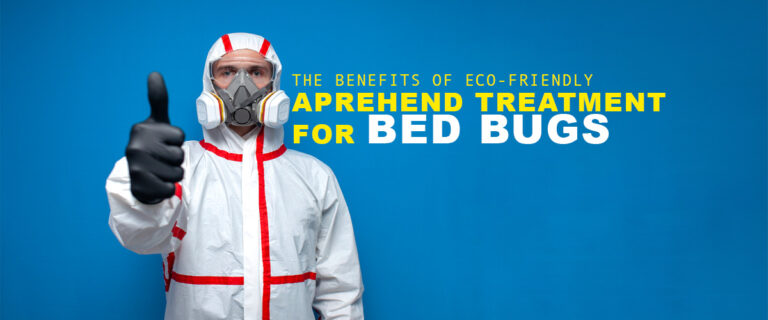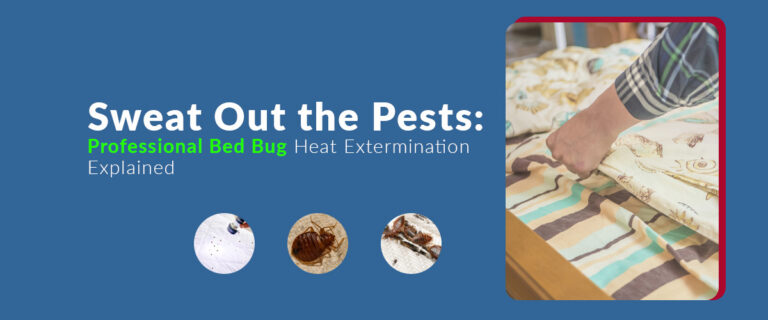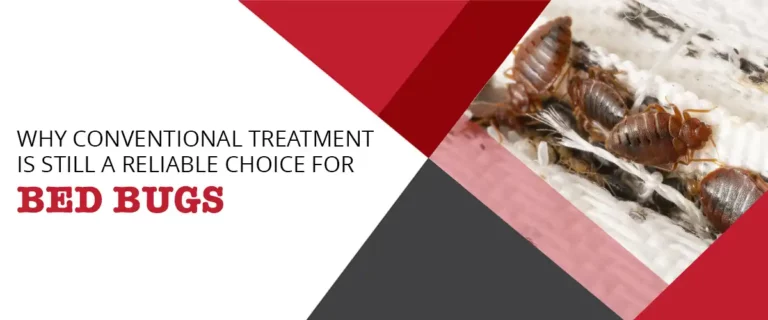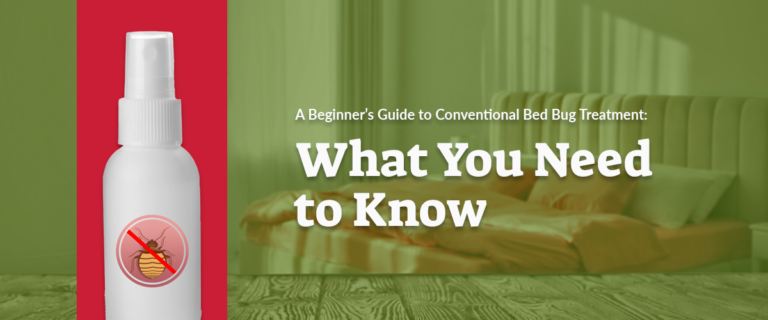Maximizing Efficacy: Best Practices for Chemical Bed Bug Treatment
Have you ever wondered why, despite your best efforts, bed bugs still party at your expense? Bed bugs present a formidable challenge to homeowners, causing discomfort and proving difficult to eradicate. Consequently, practical control methods are crucial in combating these persistent pests. These resilient pests can quickly multiply and wreak havoc on your sleep and peace of mind.
But fear not! Bed bug treatment provides a standard solution to eliminate these unwanted guests. In this article, we will explore the best practices to maximize the efficacy of bed bug treatment. Get ready to bid farewell to bed bugs for good!
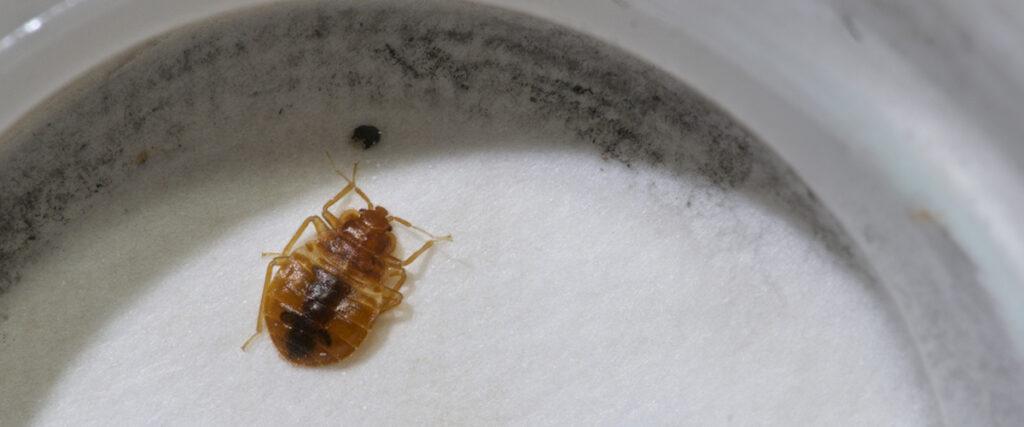
Understanding Chemical Bed Bug Treatments
Chemical bed bug treatments involve specific insecticides targeting and eliminating these bloodsucking critters. Homeowners can effectively combat bed bug infestations and reclaim their spaces by understanding how these treatments work.
The science behind how chemical treatments kill bed bugs:
- Pyrethroids act on the nervous system of bed bugs, leading to paralysis and death. They mimic the action of naturally occurring toxins found in chrysanthemum flowers.
- Neonicotinoids disrupt the nicotinic acetylcholine receptors in the bed bug’s nervous system, causing overstimulation, paralysis, and death. This class of insecticides is similar to nicotine.
- Desiccants work by destroying the protective waxy layer on the bed bug’s exoskeleton, leading to dehydration and death.

Pre-Treatment Preparations
Before undergoing chemical treatment, it is crucial to prepare your home adequately. Decluttering and cleaning eliminate bed bug hiding spots and make treatment more effective. The following are steps to prepare your home before undergoing chemical treatment:
- Thoroughly vacuum your home, focusing on carpets, furniture, and hidden spots.
- Dry everything on the highest dryer setting after washing all clothes, bedding, and curtains in hot water.
- Seal sanitized items with plastic to avoid re-infestation.
- Reposition of furniture for perimeter treatment access.
Identifying infestation hotspots is crucial because it enables targeted chemical treatment, significantly increasing its effectiveness.

Selecting the Right Chemicals
Selecting the right chemicals is crucial for effective bed bug eradication. Different chemicals are available for bed bug treatment, each with pros and cons, such as:
- Pyrethroids are highly effective but may encounter resistance.
- Desiccants – physically damage bugs without resistance but slower acting.
- Neonicotinoids – effective against resistant populations but used cautiously due to potential environmental impact.
Guidelines for choosing chemicals are as follows:
- Assess the infestation level – Combination treatments might be necessary for severe cases.
- Consider safety – Opt for chemicals with lower toxicity levels in environments with children or pets.
- Evaluate resistance potential – Use chemicals with different modes of action to avoid resistance buildup.
- Follow regulations – Check local guidelines to approve the chemicals used in your area.

Application Best Practices
Applying chemical treatments is vital to their efficacy. When using chemical treatments, follow these best practices for optimal results and safety:
- Thoroughly cover all infested areas, including cracks and crevices.
- Minimize risks by wearing appropriate protective gear and following product instructions.
It also compares professional application with DIY approaches, highlighting the benefits of professional involvement:
- Professional application ensures safety through expert handling of chemicals and specialized equipment, mitigating exposure risks. It guarantees effectiveness, as professionals know how to choose and adequately treat specific problems.
- DIY efforts may be cost-saving but need more safety measures and efficacy, potentially leading to repeated applications or damage.
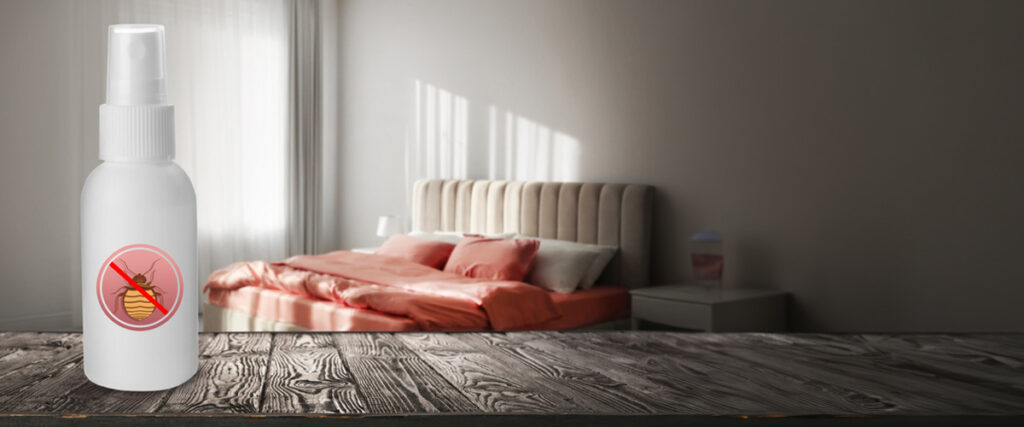
Safety Measures During Treatment
Ensuring safety during chemical treatments is paramount. During the application, prioritize safety with these critical measures:
- Temporarily relocate residents and pets to a safe area.
- Protect property by covering surfaces and removing sensitive items from treated areas.
Proper handling and disposal of chemicals and treated materials are essential, as are following safety guidelines to avoid potential risks:
- Adhering to safety measures for residents, pets, and property protection.
- Proper chemical handling to prevent accidents and exposures.
- Safe disposal of chemicals and materials treated with chemicals.
- Following established safety protocols to minimize potential risks.
- Training and awareness to ensure safety during treatment.
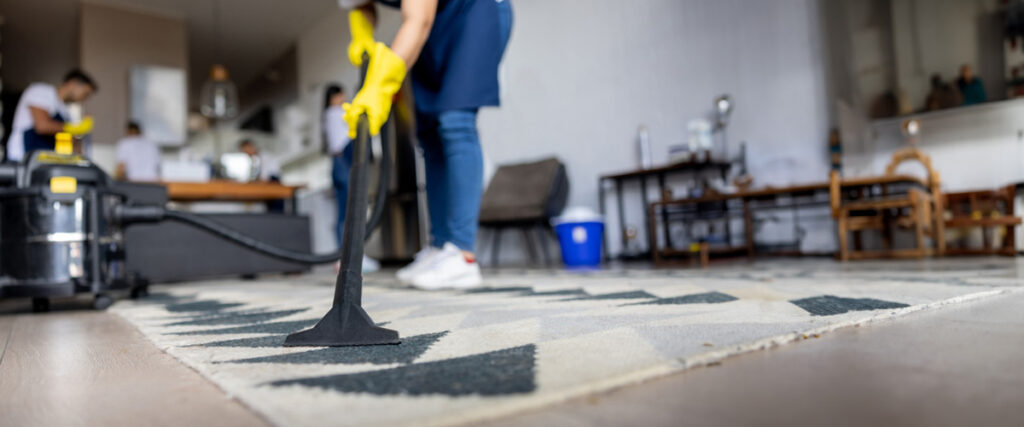
Post-Treatment Care and Monitoring
After the chemical treatment, follow these steps to maximize its effectiveness and prevent re-infestation:
- Vacuum all areas thoroughly and regularly, including hard-to-reach spots.
- Use hot water to wash clothes, curtains, and bedding, then air dry at a high temperature.
- Clean bedding, curtains, and clothes with hot water and dry at high temperatures.
- Close off wall and floor fissures to prevent bed bugs from hiding there.
- Dispose of clutter where bed bugs can hide.
Regularly monitoring treated areas and signs of bed bug activity include:
- Check bed frames, mattresses, and furniture for signs of bed bugs or their droppings.
- Install bed bug interceptors under the bed and furniture legs to catch and monitor bed bugs.
- Look for blood spots on sheets or pillowcases, indicating bed bug feeding.
- Awareness of musty odors from bed bug scent glands can signal an infestation.
- Monitoring for itchy bites or welts on the skin, though not all individuals react to bed bug bites.
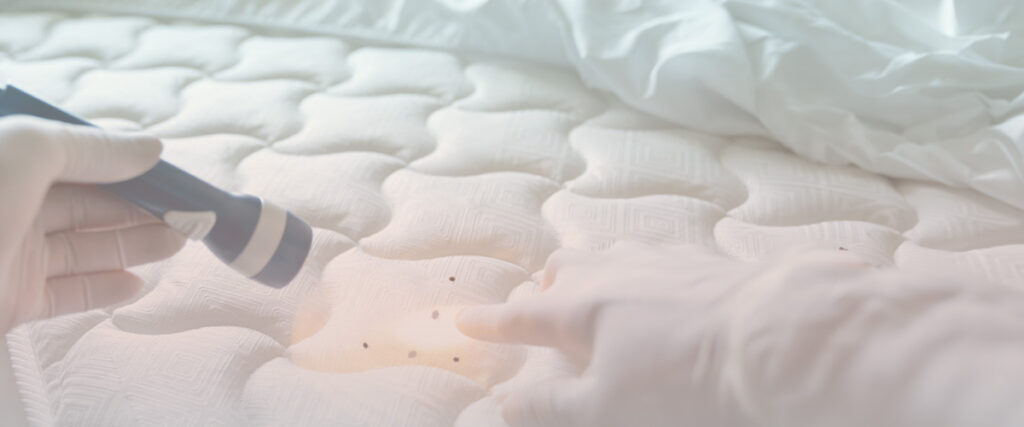
Integrating Chemical Treatment with Integrated Pest Management (IPM)
Within an Integrated Pest Management (IPM) approach, chemical treatments play a targeted role, are used only when necessary, and complement other methods. They aim to minimize environmental impact and resist pest tolerance buildup. Strategic use ensures effectiveness while promoting sustainability and safety.
Combining chemical treatments with other methods enhances overall effectiveness through:
- Diversity of Tactics – Different methods target pests at various life stages, reducing survival chances.
- Reduced Resistance – Alternating chemical and non-chemical treatments prevent pests from developing resistance.
- Comprehensive Coverage – While chemical treatments reach vast areas, vacuuming and heat treatment target specific zones, ensuring no hiding spots are left.
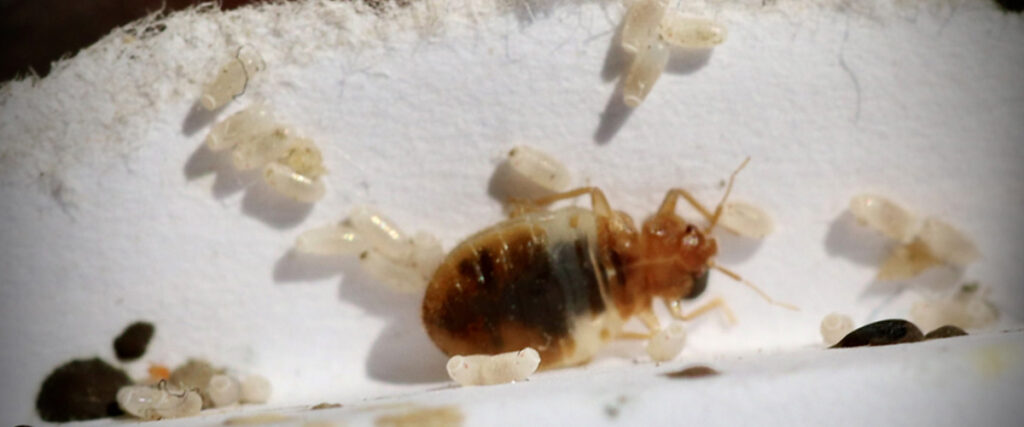
Bed Bug Blitz: Chemical Tactics
In conclusion, when dealing with bed bugs, following best practices in chemical bed bug treatment in Illinois is vital for maximizing efficacy and ensuring the safety of your home. You can effectively eliminate bed bugs by adhering to pre-treatment preparations, selecting the right chemicals, applying them correctly, and taking the necessary safety measures.
Remember, professional services offer expertise and experience to tackle bed bug infestations successfully. Don’t let bed bugs take over your home – take action today and say goodbye to these unwanted guests!
References:
- Identify bed bugs: how they start, where they come from. (n.d.). Retrieved from https://www.pestworld.org/pest-guide/bed-bugs/
- Quesada, C., & Gripp, S. (2022, June 30). Biology, habitat, and management of bed bugs. Retrieved from https://extension.psu.edu/biology-habitat-and-management-of-bed-bugs
